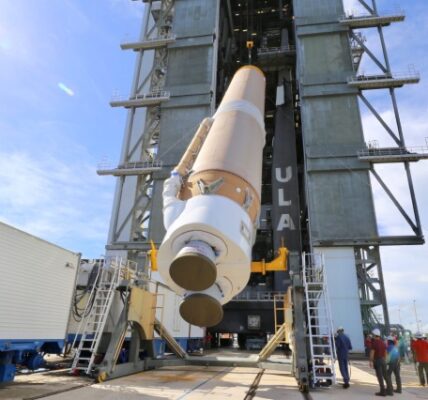The Chemical Pollution On The International Space Station Is Extraordinary According To A Study Shows
Centralizations of possibly hurtful substance intensifies in dust gathered from air filtration frameworks on the Worldwide Space Station (ISS) surpass those found in floor dust from numerous American homes, another review uncovers.
In the primary investigation of its sort, researchers broke down an example of residue from air channels inside the ISS and found degrees of natural pollutants which were higher than the middle qualities tracked down in US and Western European homes.
Distributing their outcomes in Natural Science and Innovation Letters, analysts from the College of Birmingham, UK, as well as the NASA Glenn Exploration Center, U.S., say their discoveries could direct the plan and development of future space apparatus.
Pollutants viewed as in the “space dust” included polybrominated diphenyl ethers (PBDEs), hexabromocyclododecane (HBCDD), “novel” brominated fire retardants (BFRs), organophosphate esters (OPEs), polycyclic fragrant hydrocarbons (PAH), perfluoroalkyl substances (PFAS), and polychlorinated biphenyls (PCBs).
BFRs and OPEs are utilized in numerous nations to meet fire security guidelines in purchaser and business applications like electrical and electronic hardware, building protection, furniture textures and froths.
PAH are available in hydrocarbon fills and discharged from ignition processes, PCBs were utilized in building and window sealants and in electrical hardware as dielectric liquids, while PFAS have been utilized in applications like mess sealing specialists for textures and dress. In any case, their potential human wellbeing impacts have prompted some of them being restricted or restricted being used.
PCBs, a few PFAS, HBCDD and the Penta-Octa-, and Deca-BDE business details of PBDEs, are classed as tenacious natural contaminations (POPs) under the UNEP Stockholm Show. What’s more, some PAH are delegated human cancer-causing agents, while some OPEs are getting looked at for limitation by the European Synthetic substances Office.
Co-creator Teacher Stuart Harrad, from the College of Birmingham, said, “Our discoveries have suggestions for future space stations and environments, where it very well might be feasible to prohibit numerous pollutant sources via cautious material decisions in the beginning phases of plan and development.
“While convergences of natural impurities found in dust from the ISS frequently surpassed middle qualities found in homes and other indoor conditions across the US and western Europe, levels of these mixtures were for the most part inside the reach tracked down on the planet.”
Specialists note that PBDE focuses in the residue test falling inside the scope of fixations identified in US house residue might ponder utilize the ISS of inorganic FRs like ammonium dihydrogen phosphate to make textures and webbing fire resistant. They trust that the utilization of economically accessible off-the-rack things welcomed ready for the individual utilization of space explorers, like cameras, MP3 players, tablet PCs, clinical gadgets, and dress, are possible wellsprings of a large number of the synthetic substances identified.
Air inside the ISS is continually recycled with eight to 10 changes each hour. While CO2 and vaporous follow foreign substance expulsion happens, how much this eliminates synthetics like BFRs is obscure. Elevated degrees of ionizing radiation can speed up maturing of materials, including breakdown of plastic merchandise into miniature and nanoplastics that become airborne in the microgravity climate. This might cause focuses and relative wealth of PBDEs, HBCDD, NBFRs, OPEs, PAH, PFAS, and PCBs in ISS residue to vary strikingly from those in dust from earthbound indoor microenvironments.
Researchers estimated groupings of a scope of target synthetic substances in dust gathered from the ISS. In a microgravity climate, particles float around as per ventilation framework stream designs, in the long run keeping on surfaces and air admissions.
Screens covering the ISS HEPA channels aggregate this flotsam and jetsam, requiring week by week vacuuming to keep up with productive filtration. Material in ISS vacuum packs contains beforehand airborne particles, clothing build up, hair and other garbage by and large distinguished as rocket lodge dust. Some vacuum sacks were gotten back to Earth for investigations of this extraordinary residue, with a little example sent to the College of Birmingham for examination in the review.















